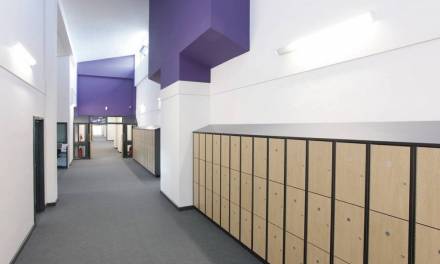Behaviour on the corridors of school is just as important as behaviour inside the classroom.
It can be disruptive and challenging for teachers when they are trying to teach a class where there is activity taking place on the corridors and there are particular times of the day when the corridors can be noisy areas where incidences of unacceptable behaviour can occur.
How pupils interact with their peers and the school staff when they are in the corridor is an important element of the overall environment of the daily learning experience and can either be a positive or negative contributing factor to the day to day lives of all who are working or studying there.
1. Start by finding the central issues
The way to look to put strategies in place to improve corridor behaviour is to track down the ‘hot spots’ of the school which are the central points of noise or poor behaviour.
A good way to tackle this is to ask all members of staff (teaching and non-teaching) to walk around the whole school to carry out a corridor survey. Arm each person with a ground plan with a view to marking different areas that they feel are the parts of the corridors that are causing issues.
In addition, request what time of the day they undertook the survey and any additional comments such as if they feel it is a regular occurrence or was a one-off incident. This could be comment such as ‘a part of the corridor where pupils often congregate over the lunchtime period’ or ‘noise caused by an argument between two pupils’. A further option would be to give each area of the corridor a score out of ten as to how problematical it is.
As it is an issue that can greatly affect pupils, involve them through the school student council and ask them to undertake a survey. Joint working is part of the premise of a student council and they will have valuable input as the users themselves of the areas and an insight into why some problems are happening.
2. Analyse and use the gathered data
Once everyone has completed their corridor survey, it’s time to collate and analyse the behaviour. This will give an overarching view of areas which are consistently noisy or are catalysts for recurring incidents such as fights breaking out.
A large-scale map – A0 size perhaps with all the results added to it will give a very visual aid to work from.
3. Draw up a list of acceptable and unacceptable behaviours
With the results available showing where the issues are and having found the ‘hot spots’ which require the most attention, it’s now time to decide what is deemed acceptable corridor behaviour and what is not. This is important so all staff are giving the same message to pupils.
4. Take the results to the classroom
With the surveys completed and the list of behaviours complete, it’s time to introduce the school to the results and the way forward.
This should be carried out through a set of lesson plans and activities which are taught to all pupils so they are all aware of what behaviour will not be tolerated on the corridors.
5. Supervision and corridor ownership
The last part of the jigsaw is to ensure adequate supervision of the corridor – particularly in the discovered ‘hot spots’. This will discourage unacceptable behaviour.
Corridors can be given ownership by pupils by creating learning zones. Hand over sections of the walls to be used to display samples of work and the pupils will quickly learn to be more respectful of their communal areas.









